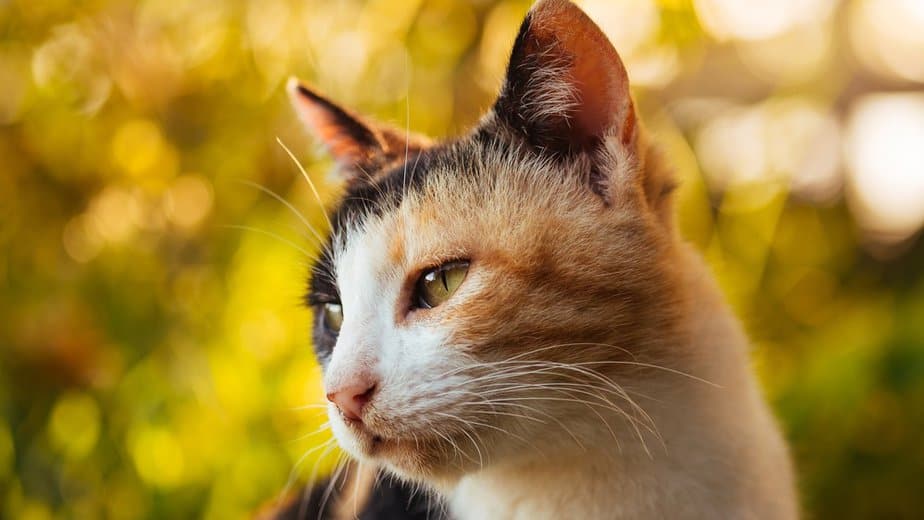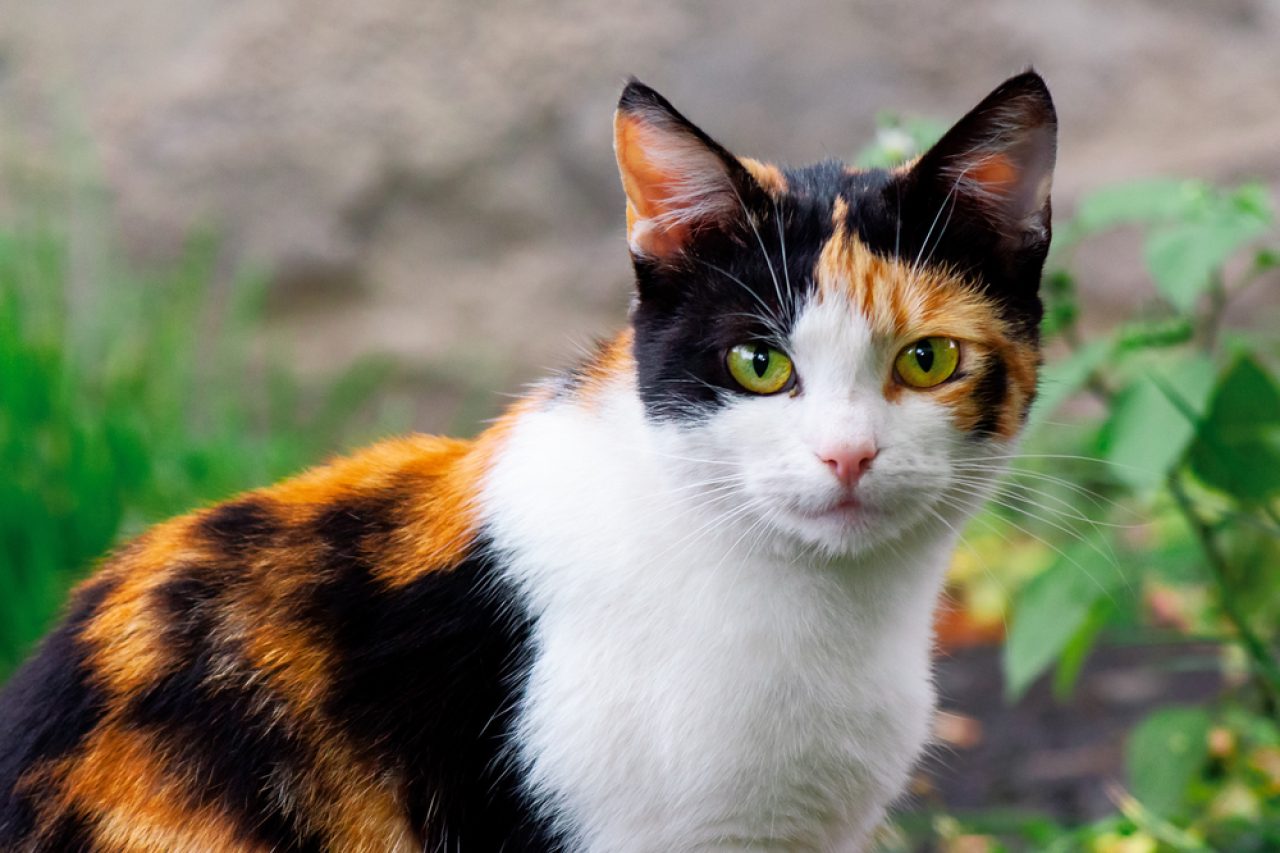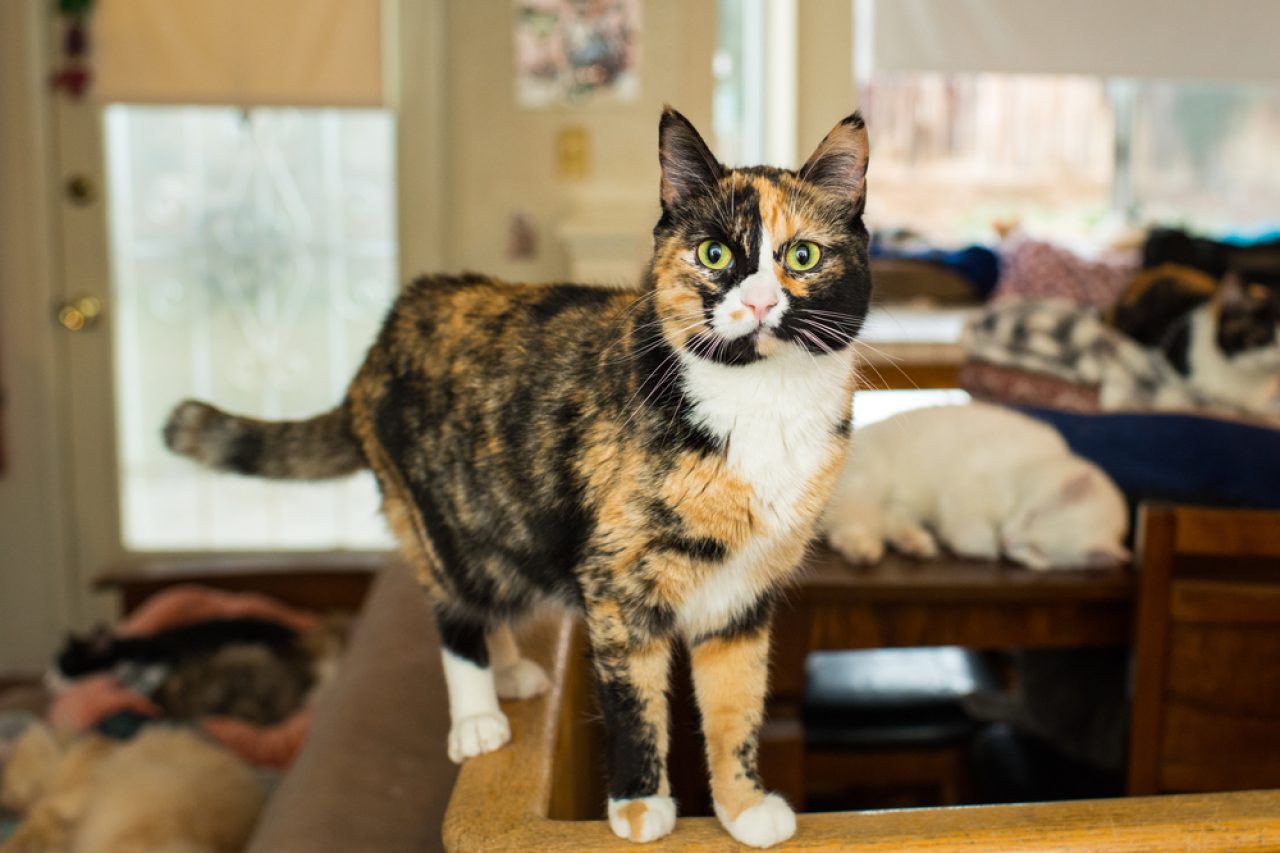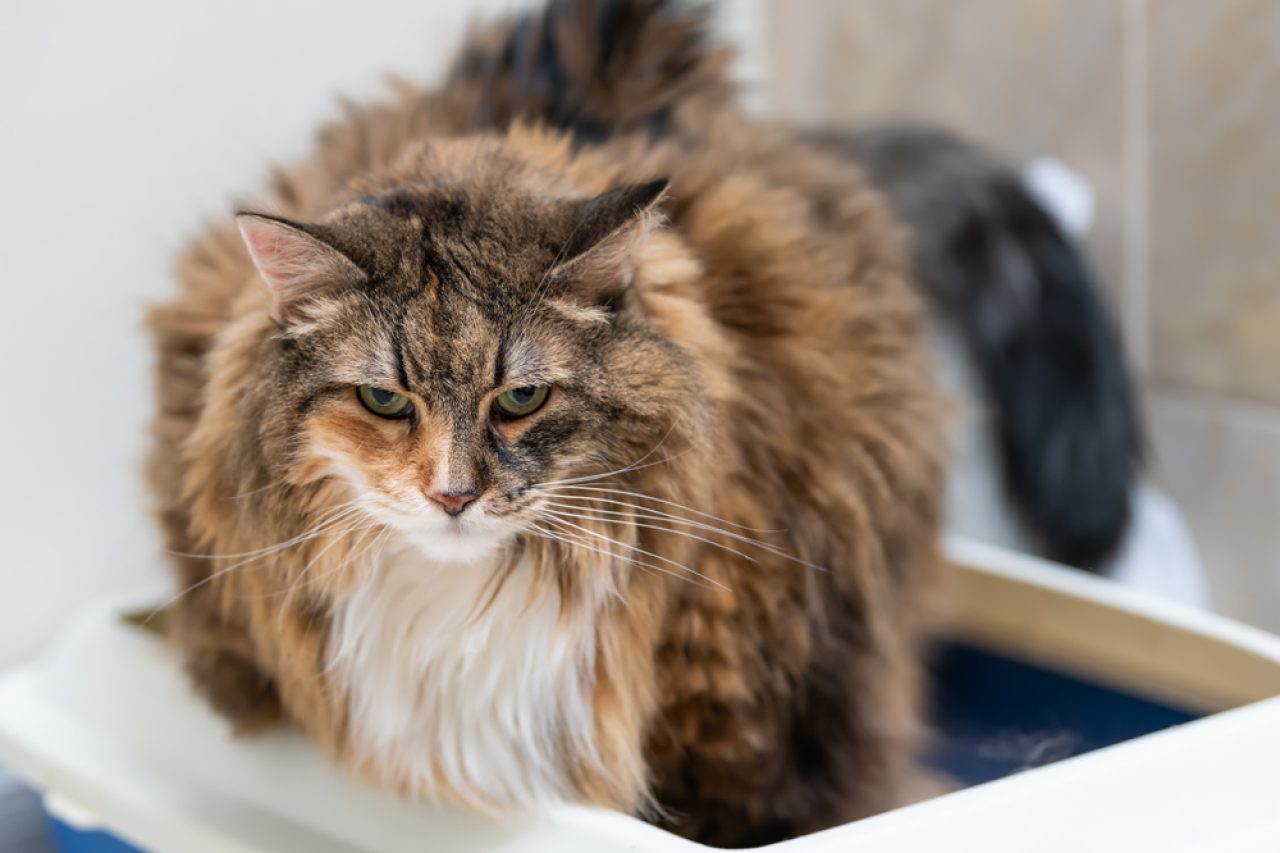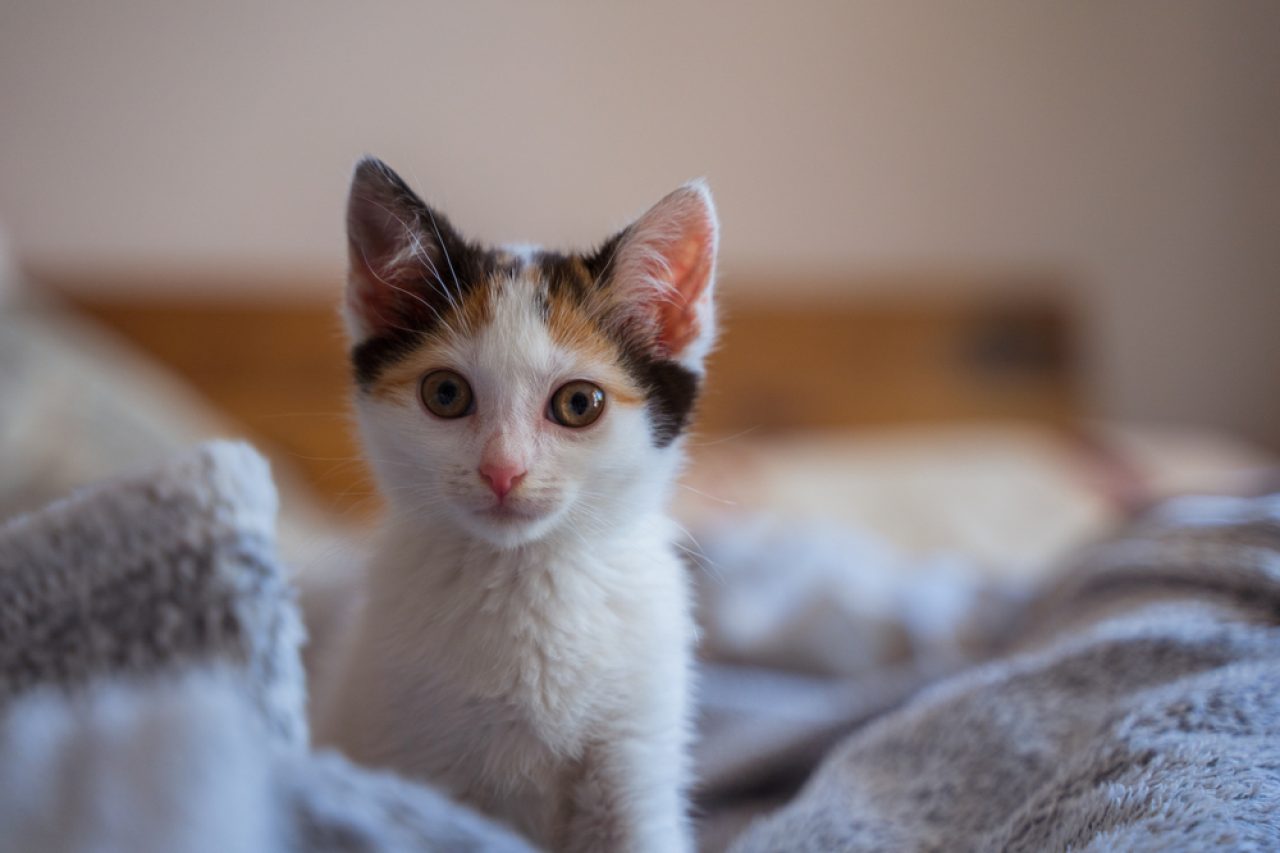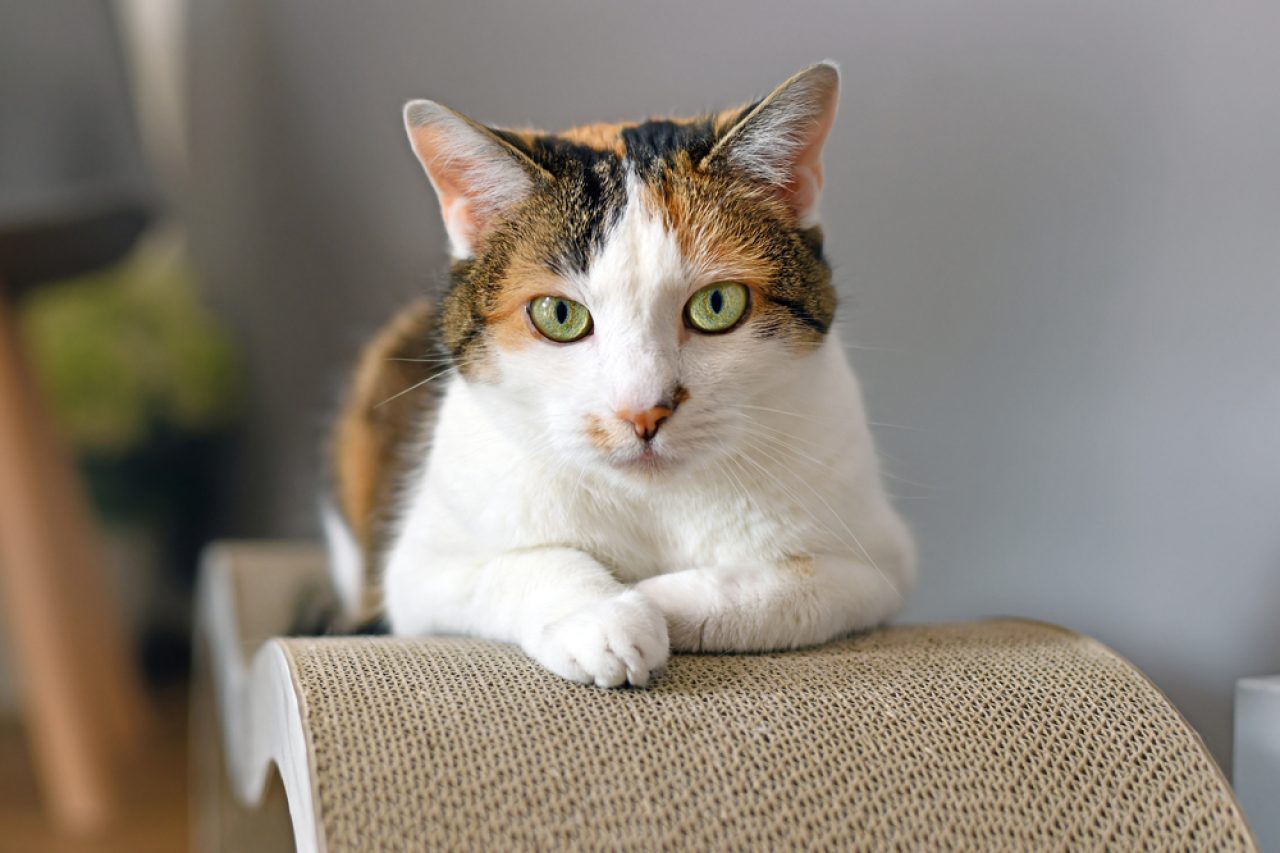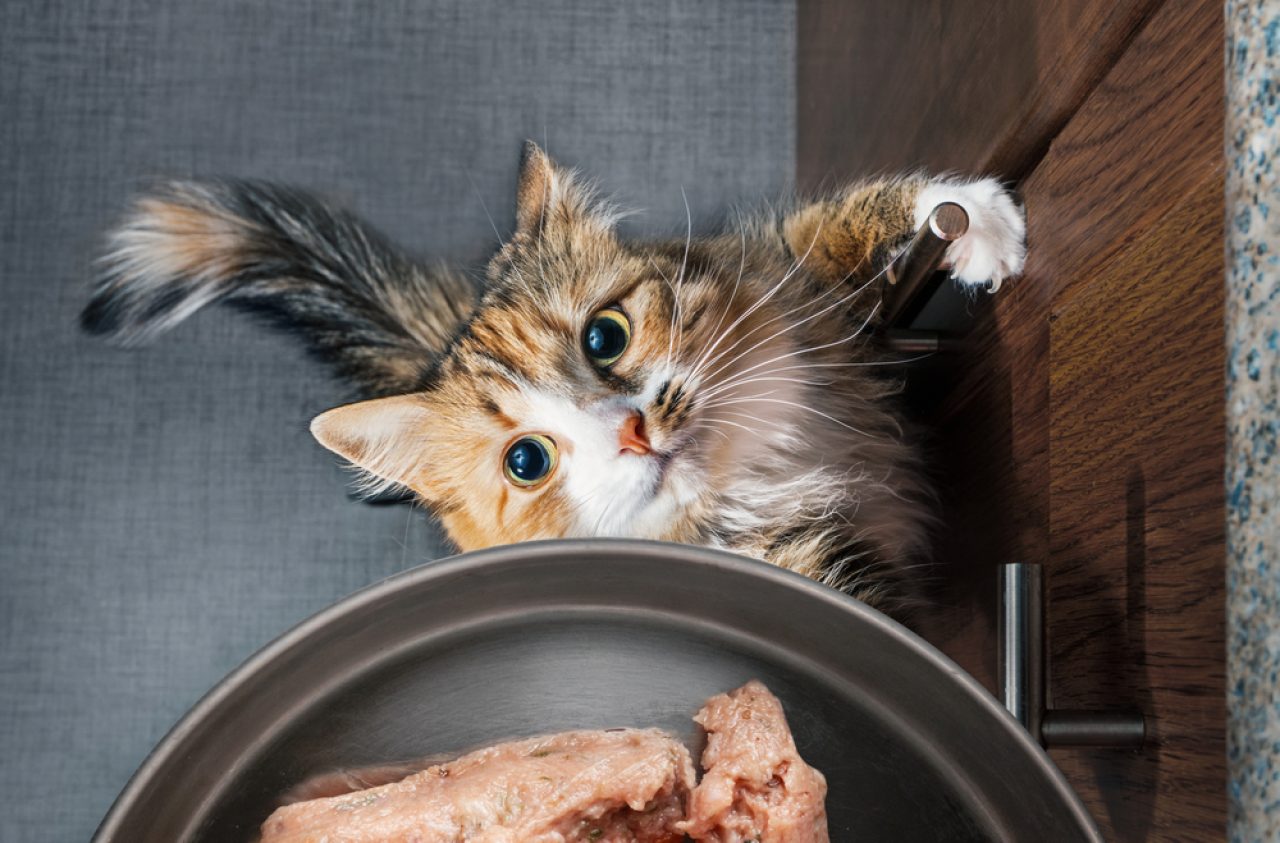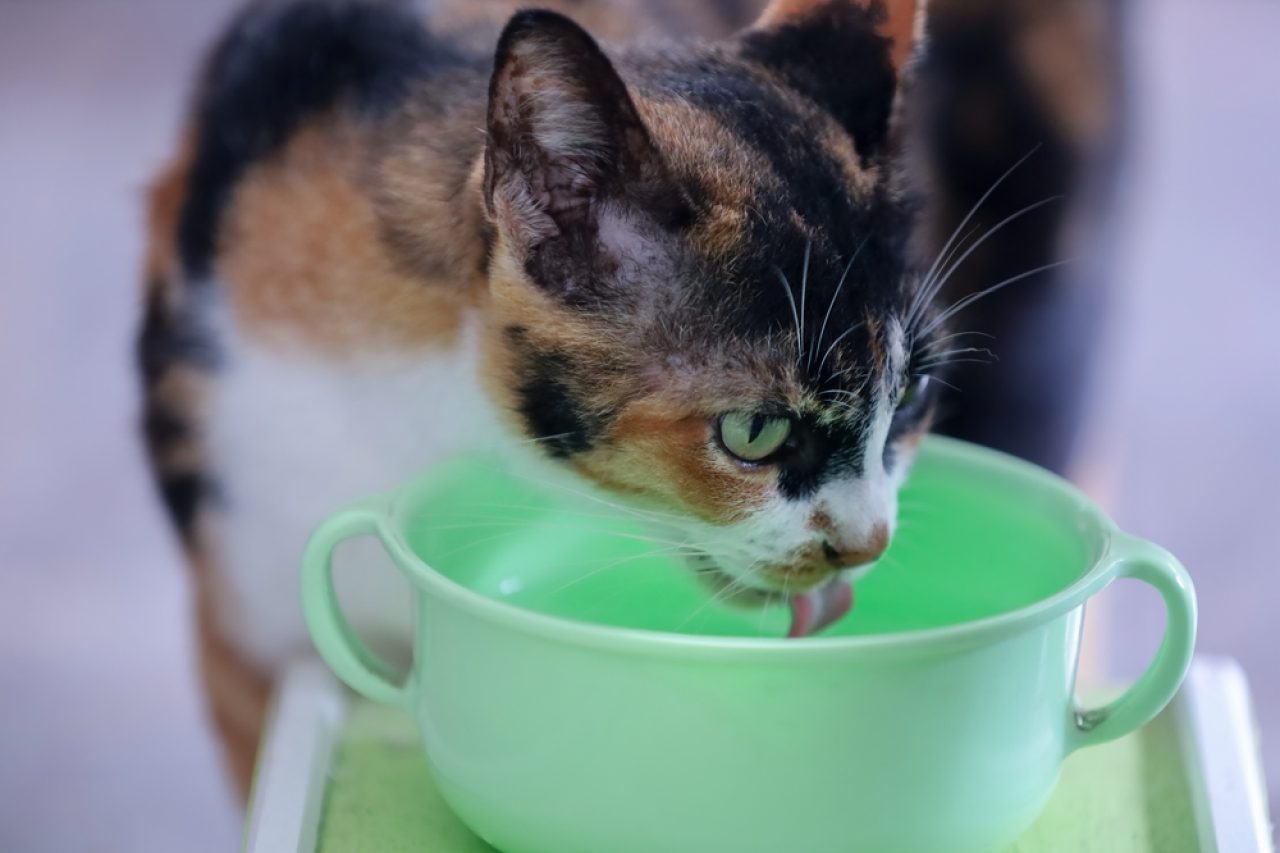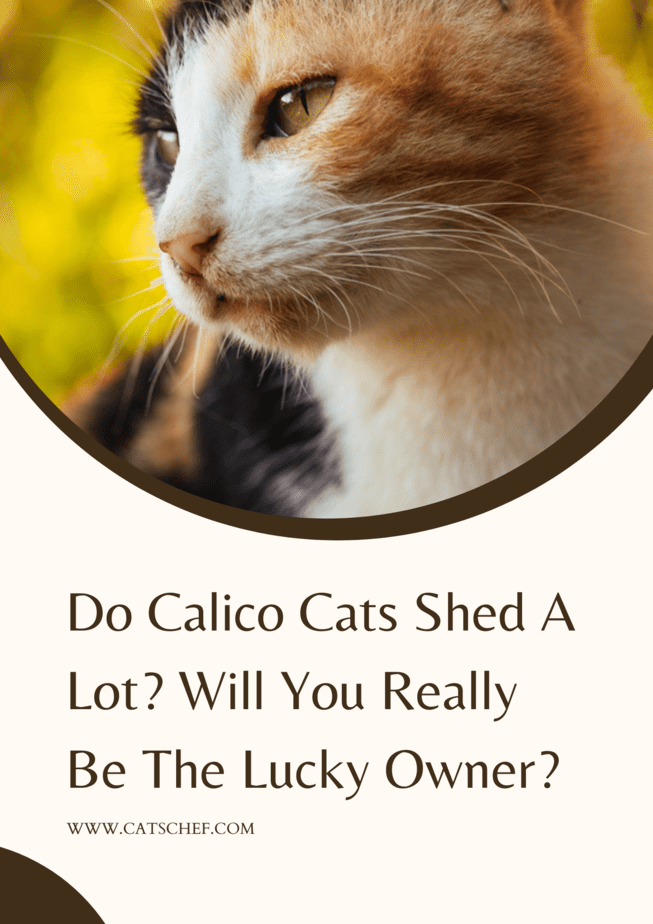📖 Table of Content:
Hey there, beautiful people! Today we’re talking about another topic that is often mentioned in the pet shop where I work. Do calico cats shed?
Let’s make something clear first. Calico is not a specific cat breed, but it’s a term that describes the pattern some felines have. So basically, Maine Coon, Many, or Persian – it doesn’t matter. The only requirement is that they have three specific colors. Are you wondering which ones?
For a pattern to be calico, your furbaby needs to have tri-colored fur, but not any colors. You have to look for black, red (often called orange), and white before you declare that you have a calico cat.
This pattern got its name based on an unbleached patchwork that was produced in Calicut, an Indian city from the 18th century. The only catch with this beautiful coat print is that it can only be inherited from the same gender parent.
The problem arises with the red fur, which daughters can only get from their mothers. Black and white fur can be inherited from either of the parents. Also, another thing that you have to know about calico cats before we start talking about shedding, is that they are mainly female.
The odds of having a calico male cat are 1 to 2999, meaning that every 3000th calico cat is male. Interesting, right? Anyways, let’s talk about their shedding habits. Buckle up!
Do calico cats shed?
Yes, yes, yes. I know that people who are allergic won’t be enthusiastic after reading this, but yes, calico cats shed. Since the pattern isn’t dictating whether a feline will leave a hairy trace behind or not, it was natural to conclude that they do.
When it comes to the amount of hair they lose, that’s something that’s determined based on their breed. If they have longer fur, they’ll shed more and a lot, whereas short-haired felines will shed the minimum amount.
Also, the food they’re consuming will greatly influence the quality of their hair follicles and whether their fur will be silky and glossy. Calico cats’ grooming habits can also cause excessive shedding, and they may be dealing with health issues, but we’ll talk about that later.
This tri-colored diva won’t shed much if she belongs to the Cornish Rex, Devon Rex, or Sphynx breed for example. But, honestly, you’ll need a lot of lint rollers if she’s Norwegian Forest or Maine Coon. There are only 19 cat breeds (according to the Cat Fanciers’ Association) that can obtain calico patterns.
Besides those mentioned, add American Bobtail, American Curl, American shorthair, American wirehair, British shorthair, Exotic Persian, LaPerm, Manx, Oriental cat, Persian, Scottish Fold, Selkirk Rex, Siberian, and Turkish Angora on the list as well.
They all lose their fur from time to time and in different amounts, therefore, answering questions like “Do calico cats shed more than normal cats?” is a bit complex. Since shedding is pretty much impossible to avoid, here’s what you can do to reduce it.
Why do calico cats shed?
There are multiple reasons why these calico beauties occasionally shed more. It’s a pretty wide range of reasons, from seasonal shedding to inappropriate nutrition or some health issues. We’ll talk about all of them in the next part.
1. Stress and anxiety
It’s really important to know that the reasons why your calico cat sheds excessively are, most of the time, stress and anxiety. This beautiful fluff doesn’t like changes at all, like any other cat in fact. That’s the reason why she’ll be stressed or anxious.
If you’re asking for triggers, I’ll mention some of them. Bringing a new pet home, no matter how friendly it is, will upset your cat. Small changes in your living environment may also have some effect. These can be as simple as moving her litter box to a new place or putting a new plant under the window.
No matter that these creatures are extremely curious, they don’t like changes. So, your furbaby may get anxious when moving to the new house, or she’ll be stressed if she got in a fight with your neighbor’s black cat. It is simple and it’s not bad luck, don’t worry.
Anxiety may make her lick herself too much that you’ll even be able to notice bald patches on her body. In case you can’t calm her down on your own, don’t hesitate to ask for professional help. Your vet should know a thing or two or at least recommend you a cat’s behavioralist that can solve the problem.
2. Hygiene
Bad hygiene may be one of the main culprits because your calico cat is shedding a lot. If your tri-colored beauty belongs to the long-haired breeds, she’ll need an occasional bath and your help with grooming. This will also help her to get rid of fleas on time, for example.
Make sure you get the proper equipment and have some spare time at least once a week (more often if your cat isn’t completely an indoor cat), and brush her fur. This will help you to make the environment you live in a bit more acceptable for your allergic friends, and cleaning will be easier.
Also, regularly change her litter and keep it odor free. It may not be easy to establish a new routine if you don’t practice any of these by now, but better late than never, right?
3. Health issues
Shedding can be caused by underlying health issues your calico cat may have. Those with longer furs are more prone to fleas, mites, and other parasites, but short-hair fluffs are not safe either. If your feline is their host, she may start losing her hair because of skin irritation.
Also, your cat can have allergies, the same as human beings, and those may increase shedding. The main allergens for them are pollen and dust, but they can also have some problems with food, so make sure you know if your feline has those issues.
Other, more serious health problems that may have shedding as one of their symptoms are skin infections, hormonal imbalances, hyperthyroidism, or diabetes. Besides these, she may have problems with her kidneys and liver, or she may have some type of cancer that includes excessive shedding.
As soon as you notice any changes in her eating habits or her behavior, don’t hesitate to call your vet. Reacting on time may prevent your calico cat from going to kitties’ heaven if she wanted to go that way.
4. Seasonal shedding time
This is something completely normal for some cat breeds, and if your calico is shedding for this reason – there’s nothing to worry about. Some felines have to change their fur when warmer weather comes, especially those that have a double coat.
Seasonal shedding happens twice a year, sometimes at the start of fall and spring. Don’t panic though! This doesn’t mean that your kitty will lose her fur completely, but you’ll notice much more of her hair in your living space.
I mean, when you think about it rationally, do they really need thick coats for warm summer nights? I think not.
5. Diet
Last but not least, her diet can greatly affect your calico cat’s shedding process. If she’s not eating high-quality meals you can rest assured that she’s going to lose more hair. Cats are obligate carnivores, so you have to serve her meat full of proteins, fat, and other vitamins and minerals essential for her health.
Also, she needs a great amount of Omega-3 fatty acids, which are mainly found in salmon, tuna, and mackerel. If you’re not sure what kind of diet your feline should have, you can always ask someone who knows at least a bit better, a nutritionist or your vet in this case.
Is it possible to reduce shedding?
I have to be honest. Reducing shedding is a bit tough, but it’s possible. And you can also take control of it in your hands and manage it properly. Don’t celebrate just yet because this can’t happen overnight. You’ll need to be patient and take care of your kitty.
None of these “tricks” that I’ll mention will work if you give up after the first try. If you want to be a calico cat owner, you have to be ready that all-year-around shedding will be present, no matter what you do or feed your cat.
However, incorporating some new small habits may actually turn things better at least a bit. So, what can you do? Here’s the list.
1. Give your feline a bath
The first thing that you can do is give your calico cat a bath in order to control her shedding process. Depending on her breed, this may be a piece of cake or a real struggle. Maine Coons or Bengals will definitely enjoy being close to water, while some won’t appreciate it as much.
Also, pay attention to the products you’re using. There are a lot of cats’ shampoos out there, but in case you forgot that you’ve spent the last drop a week ago, dawn dish soap can come in handy. If your feline is a pretty active cat, ask someone to assist you while you’re giving her a bath. You’ll need another pair of hands, trust me.
2. Help her with grooming
This is something you can do with every cat breed; you just have to find an adequate brush for her fur. When you’re brushing your fluff, you’ll be able to create a stronger bond with that little angel. If you start doing this when she’s a kitty, she’ll get used to it and won’t complain as she’s growing up.
Another thing that you can do is use wet wipes (a wet cloth will also do the job). This is, in a way, a waterless substitution for a bath. If your kitty likes to roam outside before she enters the house again, clean her quickly. You’ll collect her hair and allergens from outside as well.
3. Pay attention to the food you’re serving her
As I’ve mentioned earlier, you have to pay attention to the food you’re serving to your feline. Every meal should be high-quality and have a lot of nutrients. Her food has to be full of proteins, fat and vitamins, and minerals that will help her maintain her health.
Try to avoid giving her a lot of kibbles and dry food and opt for wet food, since it will help her digestive processes. Omega-3 and Omega-6 fatty acids are highly important to keep her fur shiny and her hair follicles strong, so your calico cat will definitely be grateful.
4. Clean your living space more often
I guess I don’t have to mention this one, but just in case. If you want to reduce the number of allergens in your home, you should clean your living space more often. Invest some money in a good vacuum cleaner and use it to clean your furniture as well.
You can also get some air purifiers that will clean your air from all the possible allergens, including those that your feline produces. These magical devices take in the bad air and convert it into one that’s safe for you, or other family members who may have problems.
In the end, you can always use some detergent with a stronger scent that’s not pleasant for your calico cat to clean her hairy trace if she’s shedding a lot in places where you don’t want to have her allergens. This way, you can prevent her from going into your bedroom for example.
Lastly, you can buy a cat bed for your calico feline where she’ll spend most of her time, and that way, reduce shedding to a minimal surface.
5. Make sure your calico cat stays hydrated
It’s utterly important that your feline stays hydrated. This will keep her skin moist and it will be a healthier base for strong follicles. Besides water, serving her wet food will make her stay hydrated as well. In case she’s not drinking enough liquid, grab a water fountain and make it more interesting.
Final words
There are a lot of fur patterns in the feline world, but only the privileged can be calico cats. They are believed to be “lucky cats”, especially in Japan. In some other cultures, they are believed to bring good fortune and prosperity at home as well.
If you want to be a proud owner of one, now you have all the answers to the question, “Do calico cats shed a lot?”. I hope you’ll be able to find a perfect breed for yourself and enjoy her company.
